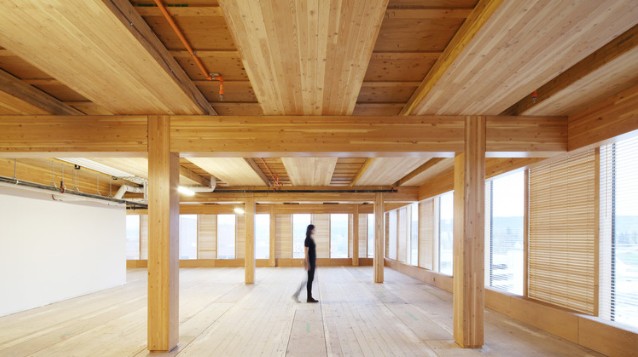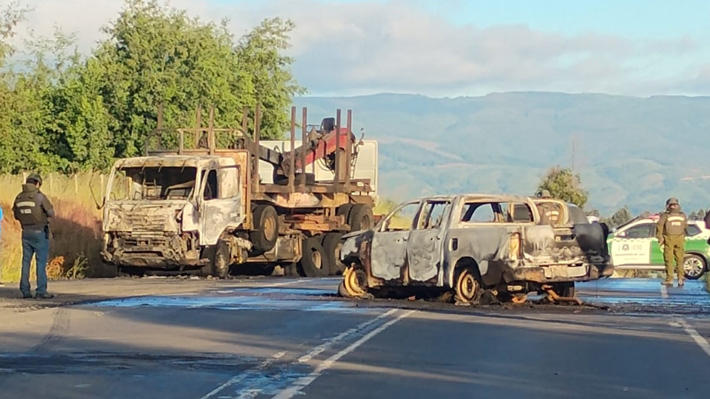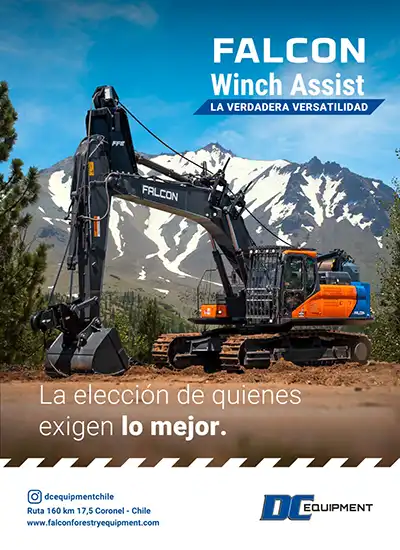Mass Timber Construction: Usach Research Studies Its Fire Resistance
In 2017, one of the greatest tragedies in recent UK history occurred when a fire at Grenfell Tower, a 24-story residential building in London, left 72 people dead and triggered a major crisis regarding construction safety.
The fire, which started due to an electrical fault in a refrigerator, spread rapidly through the material covering the building's exterior—a highly flammable plastic panel recently installed—causing flames to engulf the entire tower within minutes. Within hours, the entire building was ablaze.
The impact was so significant that the British government banned the use of combustible materials in constructions taller than 18 meters, marking a turning point in building practices, both in the country and worldwide.
Since then, new alternatives for building construction have been sought, prioritizing safer and more sustainable materials. In this context, the use of mass timber has gained traction, not only for its structural properties but also for its environmental benefits, as it has a low carbon footprint and offers good thermal performance. Countries like Canada, the United States, and several in Europe have already developed mid-rise buildings constructed almost entirely from wood, proving that it is possible to move toward cleaner construction without compromising safety.
In Chile, however, its adoption has been slower, as the country's high seismic risk has made the construction industry particularly conservative. Additionally, there is a lack of local studies on how these structures behave in fire conditions. Most international research is based on other wood species and environmental conditions different from ours, making it difficult to directly apply their findings to the national context.
Wood's Behavior in Fire
At Usach, Dr. Juan Carlos Pina, an academic from the Department of Civil Engineering, leads a Fondecyt Regular project aimed at understanding how cross-laminated timber (CLT) structures behave when exposed to fire. The research, supported by the Directorate of Scientific and Technological Research (Dicyt-Usach), seeks to provide technical evidence for designing mid-rise timber buildings while considering both structural safety and fire protection.
"When we build with reinforced concrete, which is what we commonly use today, the fire risk is mainly associated with the contents inside the space—furniture, carpets, electrical appliances—and once these are consumed, the fire tends to die out without severely affecting the structure. But when an entire building is made of mass timber, the fuel doesn't run out. The walls, floors, and partitions continue to feed the fire, completely changing the scenario," warns the researcher.
Although wood is a combustible material, mass timber behaves differently under fire compared to lighter or thinner wood elements. Its substantial thickness allows it to form a charred layer on the surface when burned, acting as a thermal barrier. This layer reduces heat penetration into the interior and delays deterioration, helping maintain the building's structural integrity for longer.
"We know that mass timber has greater fire resistance than lighter wood elements due to the charred layer that forms on its surface. However, what remains unclear is how long this protection lasts, how it varies under different fire conditions or building designs, and how much it affects structural strength. That’s why we aim to study these factors in depth and provide technical evidence for safe timber-based design," explains Dr. Pina.
To achieve this, the team combines experimental testing and computational simulations to accurately model structural behavior under fire. On one hand, they conduct lab tests with cross-laminated timber panels exposed to high temperatures; on the other, they develop numerical models capable of simulating the interaction between fire and structure over time. This allows them to study variables such as strength loss, charring rate, or structural stability, even in scenarios difficult to replicate experimentally.
"We are conducting fire tests with cross-laminated timber panels to observe their behavior under different fire exposure conditions. Based on this, we develop numerical models that simulate this behavior. This helps us study, for example, how many wood layers are needed for the structure to maintain its strength longer or how temperatures vary inside the panel. The goal is to obtain concrete data that can be used for safe building design," says the academic.
Toward More Sustainable Construction
The research also emphasizes the environmental impact of materials. Unlike concrete and steel, whose production emits large amounts of carbon dioxide, wood is a renewable resource that captures and stores carbon from the atmosphere as it grows. Chile has abundant radiata pine, a species cultivated on a large scale that could be key to advancing sustainable construction.
"Using this type of wood in buildings could reduce the sector's carbon footprint and leverage a local resource with high structural potential. If we can validate its fire performance, we could open new opportunities for the national industry—from architectural design to structural component manufacturing—promoting more sustainable construction made in Chile," states Dr. Pina.
The four-year project includes collaboration with FPInnovations, a Canadian agency leading the development of technologies for the forestry industry, which has pioneered structural design manuals for cross-laminated timber. This partnership allows the integration of advanced technical knowledge and international experience into the Chilean context. The goal is to establish concrete guidelines for fire-safe building design and advance toward national regulations facilitating CLT use in the country.
"I hope that in a few years, when someone considers building with timber in Chile, they will have clear, validated information at hand—how many layers to use, what dimensions to consider, and how to design safely against fires. This shouldn’t just be research but a useful tool for the country," concludes Dr. Juan Carlos Pina.
Source:Usach

















